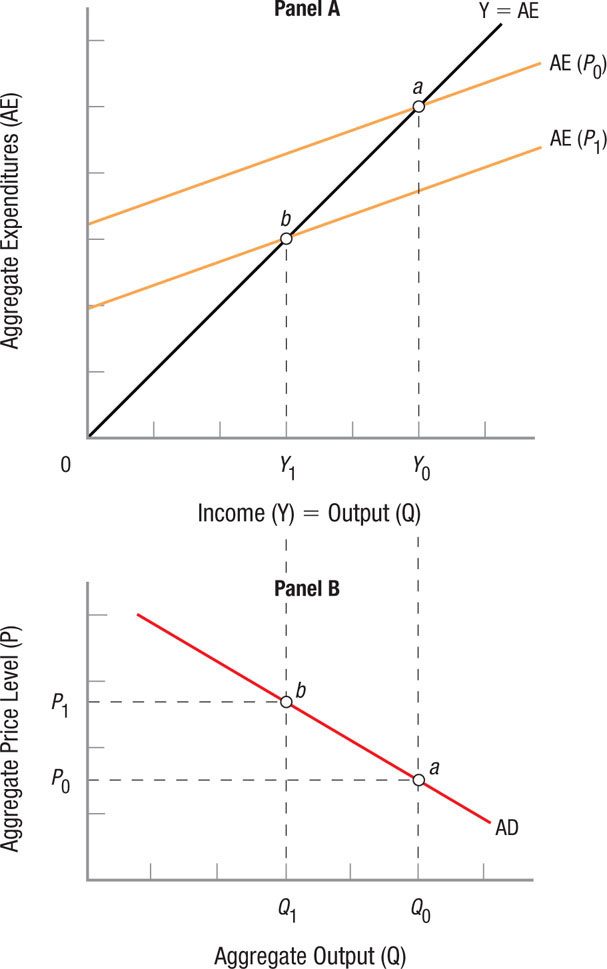Appendix: Deriving the Aggregate Demand Curve
Appendix
Deriving the Aggregate Demand Curve
The aggregate demand curve shows the quantities of goods and services (real GDP) demanded at different price levels. It can be derived using the aggregate expenditures model described in the previous chapter. To illustrate, panel A of Figure APX-1 shows aggregate expenditures (AE) curves at two different price levels. Remember that AE curves are drawn assuming fixed prices.
FIGURE APX-1
Deriving the Aggregate Demand Curve The aggregate demand curve, which shows the quantities of goods and services demanded at different price levels for the entire economy, can be derived using the aggregate spending model. Panel A shows aggregate expenditures curves at two different price levels. Point a on aggregate expenditures curve AE(P0) represents equilibrium income Y0, equivalent to a real output of Q0. Point a in panel B shows real output of Q0 that is associated with equilibrium point a and its price level P0. If the aggregate price level rises to P1, aggregate spending will decline to AE(P1) in panel A. The result is a new equilibrium at point b in both panels. Connecting points a and b in panel B results in aggregate demand curve AD.
First, consider equilibrium point a on aggregate expenditures curve AE(P0). This point shows an equilibrium income of Y0, which is equivalent to a real output of Q0. Point a in panel B, therefore, represents a real output of Q0 and a price level of P0. However, if the aggregate price level rises to P1, aggregate expenditures will decline to AE(P1) because at these higher prices, the same level of expenditures will not buy as much real output as before. The result is a new equilibrium at point b in both panels. Connecting points a and b in panel B, we have constructed aggregate demand curve AD, which represents the relationship between the price level and aggregate output.